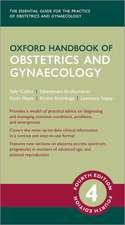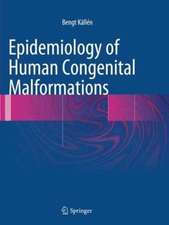Handbook of CTG Interpretation: From Patterns to Physiology
Editat de Edwin Chandraharanen Limba Engleză Paperback – 22 feb 2017
Preț: 359.98 lei
Preț vechi: 378.92 lei
-5% Nou
Puncte Express: 540
Preț estimativ în valută:
68.90€ • 74.87$ • 57.92£
68.90€ • 74.87$ • 57.92£
Carte disponibilă
Livrare economică 31 martie-14 aprilie
Livrare express 14-20 martie pentru 30.37 lei
Preluare comenzi: 021 569.72.76
Specificații
ISBN-13: 9781107485501
ISBN-10: 1107485509
Pagini: 256
Ilustrații: 34 b/w illus. 68 colour illus. 11 tables
Dimensiuni: 157 x 234 x 12 mm
Greutate: 0.42 kg
Editura: Cambridge University Press
Colecția Cambridge University Press
Locul publicării:New York, United States
ISBN-10: 1107485509
Pagini: 256
Ilustrații: 34 b/w illus. 68 colour illus. 11 tables
Dimensiuni: 157 x 234 x 12 mm
Greutate: 0.42 kg
Editura: Cambridge University Press
Colecția Cambridge University Press
Locul publicării:New York, United States
Cuprins
List of contributors; Preface; Acknowledgment; Glossary; 1. 'An eye opener': perils of CTG misinterpretation. Lessons from confidential enquiries and medico-legal cases Edwin Chandraharan; 2. Physiology of fetal heart rate control and types of intrapartum hypoxia Anna Gracia-Perez-Bonfils and Edwin Chandraharan; 3. Fetal oxygenation Anna Gracia Perez-Bonfils and Edwin Chandraharan; 4. Understanding the CTG: technical aspects Harriet Stevenson and Edwin Chandraharan; 5. Applying fetal physiology to interpret CTG traces: predicting the NEXT change Edwin Chandraharan; 6. Avoiding errors: maternal heart rate Sophie Eleanor Kay and Edwin Chandraharan; 7. Antenatal cardiotocography Amar Bhide and Francesco D'Antonio; 8. Intermittent (intelligent) auscultation in the low risk setting Virginia Lowe and Abigail Archer; 9. Current scientific evidence on CTG Ana Piñas Carrillo and Edwin Chandraharan; 10. Role of uterine contractions and intrapartum re-oxygenation ratio Sadia Muhammad and Edwin Chandraharan; 11. Intrapartum monitoring of a preterm fetus Ana Piñas Carrillo and Edwin Chandraharan; 12. Role of chorioamnionitis and infection Jessica Moore and Edwin Chandraharan; 13. Meconium: why is it harmful? Leonie Penna; 14. Intrapartum bleeding Edwin Chandraharan; 15. Labour with a uterine scar: the role of CTG Ana Piñas Carrillo and Edwin Chandraharan; 16. Impact of maternal environment on fetal heart rate Ayona Wijemanne and Edwin Chandraharan; 17. Use of CTG with induction and augmentation of labour Ana Piñas Carrillo and Edwin Chandraharan; 18. Recognition of chronic hypoxia and the preterminal cardiotocograph Austin Ugwumadu; 19. Unusual fetal heart rate patterns: sinusoidal and saltatory patterns Madhusree Ghosh and Edwin Chandraharan; 20. Intrauterine resuscitation Abigail Spring and Edwin Chandraharan; 21. Management of prolonged decelerations and bradycardia Rosemary Townsend and Edwin Chandraharan; 22. ST-Analyser: case examples and pitfalls Sabrina Kuah and Geoff Matthews; 23. Role of a computerised CTG Sabrina Kuah and Geoff Matthews; 24. Peripheral tests of fetal wellbeing Charis Mills and Edwin Chandraharan; 25. ST-Analyser (STAN): principles and physiology Ana Piñas Carrillo and Edwin Chandraharan; 26. Operative interventions for fetal compromise Mary Catherine Tolcher and Kyle D. Traynor; 27. Non hypoxic causes of CTG changes Dovilė Kalvinskaitė and Edwin Chandraharan; 28. Neonatal implications of intrapartum fetal hypoxia Justin Richards; 29. Role of the anaesthetist in the management of fetal compromise during labour Anuji Amarasekara and Anthony Addei; 30. Medico-legal issues with CTG K. Muhunthan and Sabaratnam Arulkumaran; 31. Ensuring competency in intrapartum fetal monitoring: the role of GIMS Virginia Lowe and Edwin Chandraharan; 32. Physiology-based CTG training: does it really matter? Sara Ledger and Edwin Chandraharan; Index.
Descriere
This highly practical manual promotes an evidence-based paradigm of fetal heart rate monitoring during labour.





















